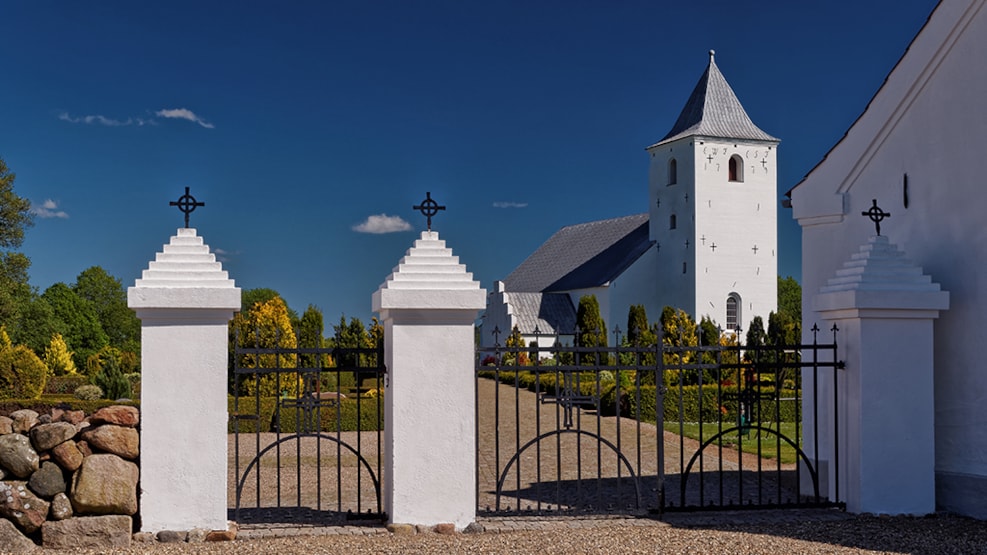
Tamdrup Church
his village church northwest of Horsens is surrounded by some mystery. For why does one of Denmark's oldest and largest village churches stand in a place that, in ancient times, was seemingly in the middle of nowhere? Legend has it that one of the most significant events in Danish history unfolded right here.
A truly unique church near Horsens
The beautiful whitewashed Tamdrup Church is Denmark's second-largest village church. Dating back to 1110-1120, it is also one of the country's oldest churches. The church isn't situated within a town (500 meters outside the rapidly growing town of Lund, on the outskirts of Horsens) and has never been. It stands atop an 80-meter hill and has served as a landmark for ships on Horsens Fjord. Tamdrup Church is unusually large, almost like a cathedral, and it's said that the church was so costly that only the king or the Bishop of Aarhus could afford to build it.
Inside the church, one can find some of Denmark's oldest lime paintings.
In 1450, the church received vaults and a tower. This renovation was quite extensive and took place while the Bishop of Aarhus owned the church, making it quite expensive. It's unclear what significance the church held, prompting such a substantial investment.
Where Denmark was Christianized
Tamdrup Church's most famous fixture is a highly interesting altarpiece - so intriguing that the original is displayed at the National Museum. The altar's 29 gilded copper plates depict the story of how the German priest Poppo converted King Harald Bluetooth and baptized him into the Christian faith. In other words, it's the tale of how Denmark was Christianized. There are indications that Poppo was revered as a saint at Tamdrup, much like pilgrimages that led to Tamdrup in the church's earliest centuries.
Legend has it that it was precisely here, at Tamdrup Church, where Poppo carried a piece of glowing iron to convince the king of the truth of Christianity. When Poppo's hands remained unharmed despite contact with the glowing metal, Harald Bluetooth saw it as a sign from God. This could explain the church's particular significance. Although this event occurred in the 900s, while the church was constructed in the 1100s, excavations outside the church revealed that during the Viking Age, there was a chieftain's estate, possibly a royal estate (the king's residence). Therefore, it's not implausible that the church was built as a sacred testimony to Denmark's Christian origins.
Would you like to visit the church?
Tamdrup Church is open when work is underway in the churchyard or by appointment with the gravedigger at phone number +45 29 66 23 10.
More historical attractions
The Coastal Area offers many exciting historical attractions, from ancient times to industrial history, museums to architectural marvels, and natural attractions. On this page, you can find inspiration for historically interesting experiences near Horsens, Odder, and Juelsminde.